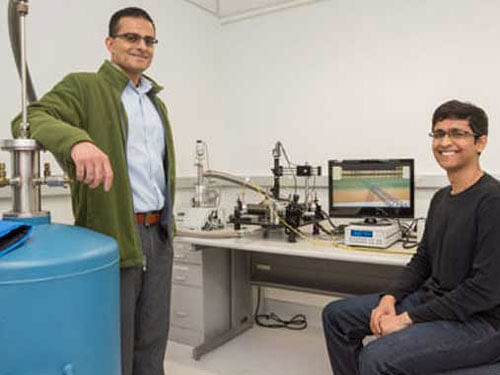
Researchers, including one of Indian-origin, have developed the smallest transistor reported to date, breaking a major size barrier with a gate only one nanometre long.
For more than a decade, engineers have been eyeing to shrink the size of components in integrated circuits. The laws of physics had set a 5-nanometre threshold on the size of transistor gates among conventional semiconductors, about one-quarter the size of high-end 20-nanometre-gate transistors now on the market.
The research team led by Ali Javey from Lawrence Berkeley National Laboratory (Berkeley Lab) in the US created the new transistor with a working one-nanometre gate. For comparison, a strand of human hair is about 50,000 nanometres thick.
"We made the smallest transistor reported to date. The gate length is considered a defining dimension of the transistor," said Javey.
"We demonstrated a 1-nanometre-gate transistor, showing that with the choice of proper materials, there is a lot more room to shrink our electronics," he said.
The key was to use carbon nanotubes and molybdenum disulfide (MoS2), an engine lubricant commonly sold in auto parts shops.
"The semiconductor industry has long assumed that any gate below 5 nanometres wouldn't work, so anything below that was not even considered," said study lead author Sujay Desai, a graduate student in Javey's lab.
"By changing the material from silicon to MoS2, we can make a transistor with a gate that is just one nanometre in length, and operate it like a switch," said Desai.
Transistors consist of three terminals: a source, a drain, and a gate. Current flows from the source to the drain, and that flow is controlled by the gate, which switches on and off
in response to the voltage applied.
Both silicon and MoS2 have a crystalline lattice structure, but electrons flowing through silicon are lighter and encounter less resistance compared with MoS2. That is a boon when the gate is 5 nanometres or longer.
However, below that length, a quantum mechanical phenomenon called tunnelling kicks in, and the gate barrier is no longer able to keep the electrons from barging through from the source to the drain terminals.
"This means we can't turn off the transistors. The electrons are out of control," said Desai.
Because electrons flowing through MoS2 are heavier, their flow can be controlled with smaller gate lengths.
MoS2 can also be scaled down to atomically thin sheets, about 0.65 nanometres thick, with a lower dielectric constant, a measure reflecting the ability of a material to store energy in an electric field.
These properties, in addition to mass of the electron, help improve the control of the flow of current inside the transistor when the gate length is reduced to one nanometre.
"This work demonstrated the shortest transistor ever," Javey added.